JAPANESE SOCCER AND FANS
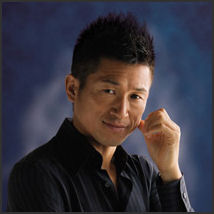
Japanese soccer dandy
Kazuyoshi Miura Soccer had traditionally been as popular as baseball in Japan. That changed somewhat with the emergence of the J-League (Japan League) soccer league in the early 1990s and was dramatically altered when Japan became engulfed in soccer fever when it co-hosted the World Cup soccer tournament with South Korea in 2002.
Soccer is particularly popular with young people. The flair and colorful hairstyles of the players is more appealing to their tastes than the disciplinarian coaches and dour team conformity that dominates baseball, dismissed by some young people as the sport of grandpas and grandmas. Many soccer fans are 20-something women.
Brazilian greats Zico, Leonardo and Alcindo played for the Kashima Antlers in the J-League.
Good Websites and Sources: Good Photos at Japan-Photo Archive japan-photo.de ; Official J-League site j-league.or.jp ; Jsoccer jsoccer.com ; Japan Football Association jfa.or.jp/eng ; 2002 World Cup in Japan and South Korea fifa.com/worldcup/archive ; Wages of Soccer Players in Japan pdf file otemon.ac.jp/cas ;
Soccer Players Official Hidetoshi Nakata site nakata.net ; Hidetoshi Nakata: Time Magazine Asian Hero time.com/time/asia ; Shunsuke Nakamura Official Site shunsuke.com ; David Beckham in Japan 2003 soccerphile.com ; Pubic Hair Like Beckham’s Mohican, 2003 smh.com.au/articles
Links in this Website: SPORTS IN JAPAN (Click Sports, Recreation, Pets ) Factsanddetails.com/Japan ; AMERICAN FOOTBALL, BASKETBALL AND TEAM SPORTS IN JAPAN Factsanddetails.com/Japan ; RUGBY IN JAPAN Factsanddetails.com/Japan ; SOCCER IN JAPAN Factsanddetails.com/Japan ; J-LEAGUE, JAPANESE SOCCER PLAYERS AND FANS Factsanddetails.com/Japan
J-League
The Japan professional soccer league is known as the J-League. Launched with great fanfare in 1993, it features corporate sponsorship, Day-Glo uniforms, flamboyant stars, and flag-waving cheerleading sections. There are 38 J-1 and J-2 teams in the J-League.
J-League teams have names like the Yokohama Fluegels, Shimizu S-Pulse, Kashima Antlers, Nagoya Grampus and the Urawa Reds. Many are heavily marketed and have all kinds of commercial tie -ons. The Fuji Bank was able to attract to 820,000 new customers with a J-League bankbook. There is even a major national lottery that revolves around picking the winners in J-League games.
In 2009 the J-League expanded to 36 teams by adding three teams with 18 teams in both the J1 and J2.
Some world class talents has pass through the J. League system including Luiz Felipe Scolarai, who coached Jubilio Iwata in the late 1990s before going on to lead Brazil to World Cup victory in 2002 and also coached Portugal and Chelsea, and Arsene Wenger which coached Grampus Eight around the same time in the 1990s before moving on to Arsenal in the English Premier League.
History of the J League and Professional Soccer in Japan
In 1987, Mori Kenji, then chairman of the Japan Soccer League, determined that players should be allowed to register as professionals. In 1988, the Japan Soccer League (JSL) set up an action committee to discuss ways to reinvigorate the sport in Japan. The following year, the committee recommended the establishment of a professional league. After nearly two years of planning, in January 1991, the Japan Football Association announced the basic structure of the new professional league. [Source: Web-Japan, Ministry of Foreign Affairs, Japan]
Shortly afterwards, the new league’s 10 participating teams were announced, and by July 1991 the name was announced: the Japan Professional Football League, or J. League for short. The J. League operates under the Japan Football Association. It is responsible for the organization of professional matches and the keeping of official match records; establishment of regulations; and training, certification and registration of players, coaches, and referees. It is also active in various other areas, selling television broadcast rights and overseeing sponsorships.
“On September 5, 1992, the J. League Yamazaki Nabisco Cup kicked off as the new league’s first official tournament. League competition play was inaugurated on May 15, 1993. The number of teams was expanded to 12 in 1994, 14 in 1995, 16 in 1996, 17 in 1997, and 18 in 1998. In 1998 the J. League introduced a two-division system of J1 and J2. At its outset, the J. League’s popularity was greatly bolstered by popular foreign soccer stars who came to Japan to play.
“Many outstanding performers in the J. League were famous foreign players who had once played on their countries’ national teams, including Brazil’s national player Zico, England’s Gary Lineker, Italy’s Salvatore Schillaci, and the former Yugoslavia’s Dragan Stojkovic. The Japanese player Miura Kazuyoshi also boosted the popularity of the J. League after he returned to Japan from Brazil, where he began his professional career, to become a star player on the Japanese national team. The J. League went on to be bolstered by supporters in the various areas where clubs are located, based on a community-based approach featuring each club’s proactive involvement in local grassroots activities, such as efforts to foster soccer players starting at the elementary school level. The J. League has helped raise the level of play among Japanese players to the point where many of them, including Nakata Hidetoshi, Nakamura Shunsuke, and Honda Keisuke, have gone on to play on clubs overseas.
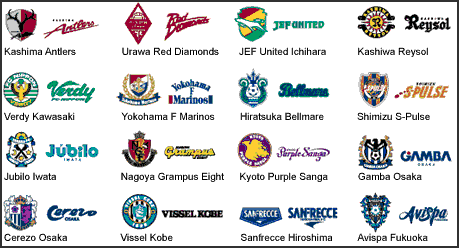
J-League teams
Big name international footballers that played in Japan have included Zico and Dunga, both captains of the Brazilian soccer team; Hristo Stoichkov, Bulgaria’s greatest play; and Salvatore Schiallaci, a hero for Italy in the 1990 World Cup. Famous foreign soccer players can earn good money at the end of their careers playing in Japan. it. There was some discussion that David Beckham and Maradona might play in Japan.
The top scorers in the J-League tend be foreigners. Some critics of Japanese soccer have argued that the inability of the national team to score goals comes from relying to heavily n foreigners in the J-League to finish. Brazilians have been named J. League MVP 8 out of 16 years. In 2008, Kashima Antler striker Marquinhos won the honor. A number of top Korean players play in the J-League. In a game between Korean J-League All-stars and Japanese J-League All-stars the Koreans won 3-1.
Rise and Fall of the J-League
The J-League took away a lot of young fans from baseball. For those who viewed baseball as too slow and long, soccer was seen as welcome relief. The sport were faster, the games were shorter and tickets were cheaper. For a while it looked as if soccer might displace baseball as Japan's No. 1 spectator sport.
While baseball was losing fans, James Sterngold wrote in the 1990s in the New York Times, "the only crisis for soccer is trying to satisfy demand. Sony, the giant consumer products company, runs a chain of more than 200 stores that sell J-League merchandise, from T-shirts to cigarette lighters. They are already doing hundreds of millions of dollars of business a year."
"When I came here, every kid was wearing a Giants cap," Japanese Baseball writer Robert Whiting wrote around the same time. "Now the J-League has all these long-haired players and crazy Brazilians running around, and it's more in tune with the younger generation." Defending baseball, the president of Japanese baseball’s Central League told the New York Times, "People have to remember that baseball and soccer are totally different sports. Some people describe soccer as being more like a rock concert. Well, baseball is more like kabuki. There are lots of intervals when you can think about things.”
After a few years enthusiasm for the J-League died down. Attendance peaked in 1994, with an average of 19,600 per game. By 1998, the figure had dropped to 11,800 and corporate sponsorship had fallen off. A recession caused many teams to lose sponsorships. The remaining sponsors tried things like merging two teams together to save money but this only caused fans to become alienated as suddenly their home team was taken away and they were asked by corporate leaders to support a rival.
In the worst cases, 3,000 fans showed up in stadiums that could hold 60,000 people; player payrolls were twice what the teams were bringing in; merchandise sat unsold on the shelves and the games were boring. Many clubs continue to lose money. Some rely on local government support to stay afloat.
The president of the J-League club Omiya Ardija resigned after it was revealed that he padded crowd figures.
J.League in 2012: Crowds up, but Still Not That Strong
At the end pf the 2012 J-League season, The Yomiuri Shimbun reported: “Attendance at J.League first division matches increased this past season, but was still below that recorded prior to the Great East Japan Earthquake in March 2011. The average attendance rose from the previous season to slightly above 17,500, with the total reaching about 5.37 million, up 540,000 but still lower than ones before the disaster. [Source: Yomiuri Shimbun, December 26, 2012]
Of the 18 J1 teams, 14 saw a year-on-year increase in average attendance for the season which ended Dec. 1. However, figures for 11 teams were still lower than the figures posted in 2010, illustrating that the league has yet to fully recover from a decline in the attendance due to the impact of the 2011 quake and tsunami.
This season, attendance at J1 games totaled 5,375,300, up from the previous season, but below the 5.64 million posted in 2010. This also indicates a continuing downward trend, since attendance peaked at about 5.88 million in 2008. Suffering a marked decline was the Ibaraki Prefecture-based Kashima Antlers. Ibaraki is adjacent to Fukushima Prefecture, where the crippled Tokyo Electric Power Co.'s Fukushima No. 1 nuclear power station is located. Attendance at Antlers' game this season was only 73.4 percent of what it was in 2010.
In addition to Kashima, Urawa Reds and Albirex Niigata, this season's top two teams in terms of attendance, and three other teams--Yokohama F Marinos, Nagoya Grampus and Shimizu S-Pulse--saw average attendance decline by more than 2,000 from 2010. On the other hand, attendance for Nabisco Cup matches this season averaged 8,947, down 1,875 from a year earlier, while Asian Champions League matches drew an average of 8,119 fans, a decrease of 2,039.
Meanwhile, average attendance in the league's second division, whose members increased to 22 this past season, stood at 5,805, down 618 from last year. The only team whose average attendance topped 10,000 was Ventforet Kofu, the J2 champion this year which drew an average attendance of 10,407. In 2010, there were four J2 teams that exceeded the 10,000 mark. The number of J2 teams which averaged less than 4,000 increased from two in 2010 to nine this year. Meanwhile, a promotion playoff introduced among the third- to sixth-place teams proved popular, with the three matches drawing a total of 48,787 fans.
Japanese Club Teams

The Urawa Reds, Gamba Osaka, and Kashima Antlers and three best teams in the J-League. The Kashima Antlers won the J-League in 2007. It was 10 points behind the Urawa Red with five matches to play and took advantage of the Red slump to finish on top. In 2005, Gamba Osaka became the first team from western Japan to win the J-League championship.
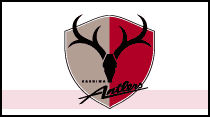
In July 2005, lowly Japanese club team Tokyo Verdy beat mighty Real Madrid 3-0 during a tour by the Spanish club of Asia. Real Madrid fielded players like Beckham, Roberto Carlos, Michael Owen, Zidane, Ronaldo and Figo. Earlier in month Verdy lost 7-1, 7-0, 3-0 and 6-0 to other J-League teams,
J-League teams have dominate the Asian Champions League in recent years, beating rivals from Iran and the Middle East. Jubilo Awata won the 1999 Asian club championship in 1999. The Urawa Reds won it in 2007 and Gamba Osaka won it 2008.
Urawa Reds
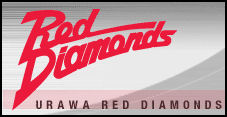
In 2006, the Urawa Reds — known in the past for their enthusiastic fans but disappointing results — beat Gamba Osaka to win it first J-League championship. The followed up their regular-season title with a victory in the Emperor’s Cup over Gamba Osaka, one of the Red’s main rivals.
The Urawa Reds placed third in FIFA Club World Cup in 2007, defeated Africa’s champion, Etoile Sahel of Tunisia 4-2 on penalty kicks after a 2-2 draw. The Red’s Brazilian striker Washington scored two goals. In the semifinal the Reds played respectably in a 1-0 loss to A.C. Milan.
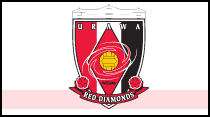
The Urawa Reds blew the title in the worst collapse in J-League history in later. With four game left in the season, they just needed to win just one game to secure their second straight title. Instead they lost two games and drew two games, only managing to score one goal in four games. In the last game the lost to last place Yokohama.
In November 2007, the Urawa Reds won the Asian Champions League, defeating the Iranian club Sepahan 2-0 in the final beforehand 60,000 hometown fans. The won 3-1 on aggravate after a 1-1 draw in Iran. They were the first Japanese team to win the Asian Champions League and qualify for the Club World Cup. The J-League team Kawasaki Frontale made it to the quarterfinals.
The Urawa Reds are based in Saitama, near Tokyo and are said to have to best fans in the J-League. Fans show up in large numbers and wave flags even when away games are shown on large screen at the home stadium. The 64,000 tickets for the home leg of the Asian Champions League the game against Sepahan in Esfahan, Iran sold out within a couple hours. When the teams doesn;t fo well the fans are not shy about expressing their displeasure. After three goalless games in March 2008, the fans revolted and held a 90 — minute sit at the stadium where the Red lost, demanding to see the club president, The can also be quite rowdy (See Below).
Gamba Osaka and Kashima Antlers

In November 2008, Gamba won the Asia Champions League final defeating Adelaide United 5-0 in a two game aggregate . To reach the finals Gamba between the Urawa Reds in the semifinal match. It was Gamba’s first and Japan’s third Asia Champions League championship and marked the second year in a row that a J-League team was Asia’s best club team. The stars on Gamba are the Brazilian striker Lucas and the midfielder Tasuhito Endo, who plays on Japan’s national team.
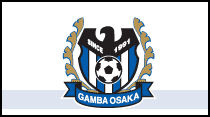
Gamba Osaka was third in the FIFA Club World Cup in 2008. It beat Pachuca, a team from Mexico, 1-0, in the third place game after scoring an impressive three goals against Manchester United — with Ronaldo, Rooney and their other top players playing — in a 5-3 loss in the semifinal game
In December 2009, Gamba won its second straight Emperor’s Cup with a 4-1 victory over Nagoya Grampus. National team star Yasuhito Endo had two goals.
The Kashima Antlers won the J. League championship for the second straight year in 2008 and its sixth title in the J-League’s 16 year history. It won on the last day of the season with 1-0 victory over Consadle in Sapporo. Nagoya Grampus and Kawasaki Frontale were close behind. Kashima completes the Japanese double in 2008 with a victory in the Emperor’s Cup on New Year’s Day.
In 2009, Kashima defeated the Reds to win their third straight J-League championship. Lead by league MVP Mitsuo Ogasawara, the Antlers finished the season with five consecutive wins to hold off a challenge from Kawasaki Frontale. Kashima’s title was its seventh in the J- League’s 17 year history.
Nagoya Grampus won the J-League title in 2010.
Nagoya Grampus, Gamba Osaka, the Kashima Antlers and Cerezo Osaka all reached the knockout stage of the Asian Champions League in 2011.
Kashiwa Reysol, 2011 J-League Champs
Kashiwa Reysol make J.League history by becoming the first team to win the title in their first year after being promoted from J2, edging 2010 champion Nagoya by one point. "Reysol went from the bottom to the top, showing everyone that effort and spirit is rewarded," Reysol fan Yoshiko Yamato from Chiba told the Yomiuri Shimbun.
Kashiwa Reysol won the J-League championship in 2011. Dan Orlowitz wrote on Goal.com: “Reysol were in the driver's seat for nearly all 90 minutes on the road at Urawa Reds, and when the final whistle blew players and staff were able to celebrate in front of nearly 10,000 supporters who traveled to the sold-out Saitama Stadium. The result in Saitama nullified the efforts of Nagoya Grampus and Gamba Osaka to steal the title. Gamba came from a one-goal deficit to win 3-1 at Shimizu S-Pulse, while Grampus needed a second-half strike by Keiji Tamada to win at Albirex Niigata. [Source: Dan Orlowitz, Goal.com, December 4, 2011]
Kashiwa were only promoted to Japan's top flight last season, before becoming J-League champions in their first campaign back up. Below the top three, Vegalta Sendai overtook Yokohama F Marinos to take fourth place after a 2-0 win against Vissel Kobe. The Tohoku-area club suffered greatly in the March 11 earthquake and tsunami disaster, but can now earn a spot in next year's Asian Champions League should Grampus or Reysol win the Emperor's Cup. At the bottom of the table, Ventforet Kofu confirmed their relegation to J2 after just one year in the top division with a 3-1 loss at Omiya Ardija. Star striker Mike Havenaar, who rejoined the team after a one-match suspension, had no shots and few offensive opportunities.
Reysol was hit with a ¥2 million fine for unruly crowd behavior in July 2011 in which a fan was arrested after he kicked a referee. Kashiwa have a history of problems with their supporters, one of whom made racial taunts at Ventforet Kaful’s striker Mile Havenaar.
Sanfrecce Wins First J. League, in 2012
In November 2012, Kyodo reported: “Sanfrecce Hiroshima won their first J. League title a 4-1 victory over Cerezo Osaka, coupled by second-place Vegalta Sendai's 1-0 defeat at home to relegation-threatened Albirex Niigata. With one match left in the 2012 season, Sanfrecce have 61 points after the win and an insurmountable four-point lead over Vegalta. [Source: Kyodo, November 25, 2012]
"We have endured some hard seasons and haven't always played the type of soccer that people can enjoy watching," captain Hisato Sato said on the field after the game. "This has happened because of all the fans that came to the stadium and watched us on television." Sanfrecce won the 1994 first stage, but never the season title. After Nagoya Grampus in 2010, they are only the second club to capture the crown before the final weekend since the J. League abolished the two-stage system in 2005.
"I've been telling the boys all week to just give everything they have for this game," Sanfrecce Hiroshima coach Hajime Moriyasu said. "We were able to win because we never backed down from a challenge and stayed positive. "This title doesn't just belong to Sanfrecce but to anyone and everyone who supported our team. They deserve a pat on the back as well." Moriyasu dedicated the triumph to his predecessor, current Urawa Reds coach Mihailo Petrovic, who laid the foundations of the club over six years through 2011.
Sanfrecce all but had the three points in the bag after one half, erupting for three goals starting with Takahagi's left-footed strike in the 17th minute — just as news spread around the stadium that Kim Jin Su had put Albirex in front in Sendai.
Hiroshima, part of the league's Original Ten in 1993, qualified for the Club World Cup as the host country's team. In the opener there Sanfreece team defeated New Zealand's Auckland City 1-0. In the quaterfinals Sanfreece lost 3-2 to Egypt’s Al-Ahly and claimed fifth place with a 3-2 win over Ulsan Hyundai of South Korea.
Soccer Fan Violence in Japan
The worst fan violence in J-League history occurred in May 2008, when Urawa lost to Gamba in Saitama, marking the first time Gamba had beaten the Reds on their home turf.
The trouble reportedly began when Gamba supporters threw objects at Urawa supporters before the match and a water balloons thrown from partitioned Gamba section hit a child on the Red side. The two sides then tosses objects at each other through the fences.
The trouble escalated after the match when a fan fell on the field and Gamba supporters formed a circle on the pitch to celebrate their 3-2 victory with a dance before a crowd of 57,000 mostly Red supporters. Urawa player Marcus Tulio Tanaka viewed the celebration as taunting the Red on their own backyard. He started a profanity-filled shoving match that prompted visiting fans to hurl objects at the Reds players. Red fans responded by tearing down the fence that separated them from the Gamba fans.
A massive brawl between players between fans broke out. More than 300 police officers were mobilized for crowd control and Red fans held 800 Gamba fans inside the stadium as virtual hostages for the next three hours until organizers were able to convince the 5,000 Reds fans surrounding them to stand down. In May 2008, Urawa was fined ¥20 million being unable to control its rampaging fans and Gamba was fined ¥10 million for stirring up trouble,
In 2008 Urawa fired two coaches and went without a trophy for the first time since 2002. The same mob that turned their anger on Gamba turned on the Red when they lost their last home game 6-1.
In March 2008, Kashima Antlers fans stormed the pitch in a rage after a game against J2 team Sanfreece which Sanfreece won because was allowed to retake two missed penalty shots in a shootout, both of which were made. Fans fought with officials and punched and kicked players who were leaving the pitch.
In December 2008, the Antlers were fined $10,000 when one of it fans struck a player on an opposing team with an oversized flag as the player was getting ready to make a corner kick. A similar incident happened a few months earlier when an Antlers player was struck with a flag as he was preparing to make a corner kick.
Thirty-Four-Year-Old Soccer Player Dies on the Field
In August 2011, 34-year-old former national team Japan defender Naoki Matsuda has died in hospital, two days after collapsing during training. Matsuda, who won 40 caps for Japan and represented his country at the 2002 World Cup."It's terrible to see someone die at such a young age," the former Japan coach Philippe Troussier, who gave Matsuda his international debut, told Reuters. "It's a big shock. He was a great guy and I felt a close bond to him. My thoughts go to his family. [Source: Reuters, August 4, 2011]
Matsuda was a handsome, youthful-looking player. He made 385 appearances for Yokohama F-Marinos, helping them win back-to-back J.League titles in 2003 and 2004. Medical personnel had rushed to Matsuda's aid after he collapsed with suspected heatstroke in very hot weather. It was originally thought that Matsuda died of heatstroke or cardiac arrest. Record temperatures across Japan have caused a rise in heatstroke cases, with 43 deaths in the two months through the end of July, according to Kyodo news agency.
Japanese Football Moves to Block Organized Crime
In February 2012, the Japanese football is taking steps to keep organized crime out of the sport in order to avoid the fate of its South Korean counterpart. J-League clubs, players and referees have issued a declaration in Tokyo saying they will take measures to keep anti-social elements out of the sport. In 2011 South Korea’s football league was hit by a massive match-fixing scandal, with nearly 80 players and brokers convicted. [Source: AP, February 15, 2012]
The J-League has set up a third-party hotline for anyone associated with Japanese professional football who wants or needs advice in dealing with suspect people. The Japan Football Association has also contracted with the Zurich-based Early Warning System GmbH, which monitors the sports betting market worldwide. The J-League is also enlisting the help of the anti-crime unit of the Tokyo Metropolitan Police Department. The 40 J1 and J2 clubs will also include clauses in players’ contracts that will commit them to steering clear of any links to organized crime.
Image Sources: J-League, Japan Zone
Text Sources: New York Times, Washington Post, Los Angeles Times, Daily Yomiuri, Times of London, Japan National Tourist Organization (JNTO), National Geographic, The New Yorker, Time, Newsweek, Reuters, AP, Lonely Planet Guides, Compton’s Encyclopedia and various books and other publications.
Last updated January 2013
